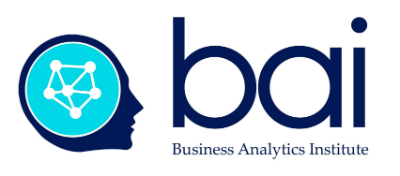
How exactly do you land that dream job in Data Science? Since these are high profile, high paying opportunities, most companies won’t be relying on resume robots to sift through the quagmire of candidates. The LinkedIn Group “Analytics for Management” is currently examining the critical success factors of successful employment in data science.
Although organizations are regularly looking for data science sciences skills in a variety of management profiles, catching a recruiter’s eye has become an increasingly difficult task. Recent estimates suggest that there are roughly fifteen thousand qualified data scientists working today, 200 000 that claim to have the credentials, and nearly one million “want-to-be”s[i]. As the marketing guru Seth Godin might propose, the goal of a curriculum vitae isn’t to stand out in a crowd but to become memorable in the minds of your future employers. [2]
As a candidate for employment, we suggest applying a data science mindset in analyzing the recruitment process. What is the nature of the problem that has pushed each specific organization to consider hiring a data scientist? What data trail can be used to qualify their market and/or organization challenge? In the eyes of their stakeholders, what do they see as the best method for addressing the challenge? Finally, how can you present the data (your profile, your experience, and your motivations) to elicit a call for action — to reach out and hire you?
In line with the visions of descriptive, predictive, and prescriptive analytics, script a business story in which your contribution will be viewed as a key success factor. Identify the nature of the employer’s challenge — a perceived lack of talent, process inefficiencies or a poor use of technology. Explore how the history of the organization and market have allowed this problem to persist. In keeping in mind that either the recruiter or the project manager is the hero of this story, describe how will you work fits into this puzzle. Provide evidence through your references and your qualifications that the “happy end” begins with bringing you on board.
If clearly telling your story is important, paying attention to what your audience is hearing is crucial. Your recruiter will be comparing your story with that related by hundreds or even thousands of other candidates. The tenets of Prospect Theory can help you predict how framing influences both the data and arguments you present. Anchoring can be used to your advantage to play to your strengths and discount the importance of your weaknesses. Ambiguity bias can be put to work to reduce the risk, uncertainty and/or ambiguity associated with your future employment.
Use the principles of visual storytelling in both your c.v. and interviews to transform your personal data into a call for action — working together. Edgar Dale’s work around the Cone of Experience demonstrated that an audience retains much more of what they see than what they read [3] They will be less sensitive to the figures you present than how you help them visualize sharable experience. The Gestalt principles of similarity, proximity, continuity, and closure are as valid here as they are in any business presentation, why not apply them to help your recruiters make sense of the story you are trying to tell?
Finally, remember that both your c.v., cover letter and each interview are just chapters in a larger collective story built around “self, us, and now”.[4] Your story began long before you ever thought of applying for employment in their organization, their story goes beyond hiring a data scientist. The use of social media and professional networking can help develop the metadata of why the two stories make sense together. Data-mining can help you uncover both the institutional stories and the conversations hidden in the background. Each step of the recruitment process should reinforce rather than detract from these conversations. In the end, your story must be both data-driven and make sense in the larger story your future employers are trying to tell.
One of the major focuses of discussion in the LinkedIn Group Analytics for Management is the key success factors in employment in data science. Each week the group examines both the job market and specific organizational opportunities. The group manager regularly posts interviews with both HR specialists and data science practitioners for insight and discussion. In the coming months, the group will be sharing examples of effective recruitment strategies and offering help in designing visual resumés and scripting employment interviews. Join the discussion, and practice what data science preaches.
The practice of business analytics is heart and soul of the Business Analytics Institute. In our Summer School in Bayonne, as well as in our Master Classes in Europe, our focus on digital economics, data-driven decision making, machine learning, and visual communications we can help you put analytics to work for you and your organization.
Lee Schlenker is a Professor at ESC Pau, and a Principal in the Business Analytics Institute http://baieurope.com. His LinkedIn profile can be viewed at www.linkedin.com/in/leeschlenker. You can follow us on Twitter at https://twitter.com/DSign4Analytics
[1] Quora, How many data scientists (by any name) are there today?, Oct. 2015
[2] Godin, Seth, Different or remarkable?, Typepad, April 2013
[3] Maheshwari, V.K, Edgar Dale’s Cone of Experience, Oct. 2016
[4] Ganz, M. Telling your Public Story,

